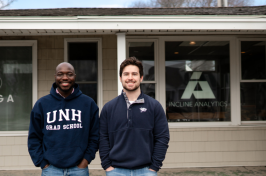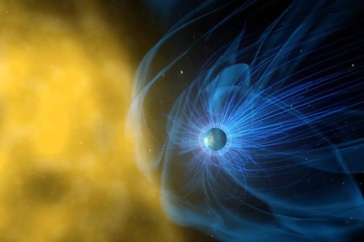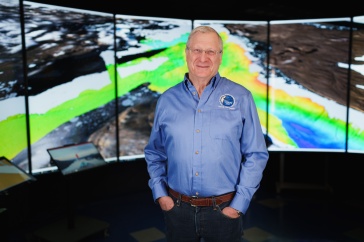
Noé Lugaz, research associate professor of physics and astronomy, has been named the editor-in-chief of Space Weather, a journal published by the American Geophysical Union (AGU). Under Lugaz, the third editor-in-chief, Space Weather is becoming a free, open access journal, meaning that anyone can read what is published.
As editor-in-chief, Lugaz is responsible for working with an editorial board and AGU members to select articles for publication from among approximately 300 submissions each year. The final decision of what will be published ultimately lies with him. “It’s challenging,” Lugaz says of the diverse topics. “One of the really nice things about this journal is that it studies the specific subject of the effects of space weather, but within that, it’s very varied.”
Lugaz’s research expertise is the propagation of solar eruptions. On an annual average of several times a week, the sun ejects giant bowls of plasma. Though each eruption contains a level of energy equal to that of millions of nuclear bombs, very few go in the direction of Earth. The bigger ones that do, however, take one to three days to reach the Earth after leaving the sun, and can affect radars and satellites, including GPS navigation. There is some concern over radiation exposure for astronauts and, in some rare cases, even pilots and flight attendants. The once-in-a-century “nightmare scenario,” as Lugaz calls it, is a complete electrical blackout for up to several months. Because of its interconnected power grid, in addition to its location and population density, New England is particularly vulnerable to this possibility.
While forecasts of solar eruptions are currently vague and unspecific, through the work of researchers like Lugaz and journals such as Space Weather, we may soon be able to accurately predict what is going to happen far enough in advance to mitigate the effects of a solar eruption.
-
Written By:
Via D’Agostino | UNH Graduate School | omd1016@wildcats.unh.edu
















































